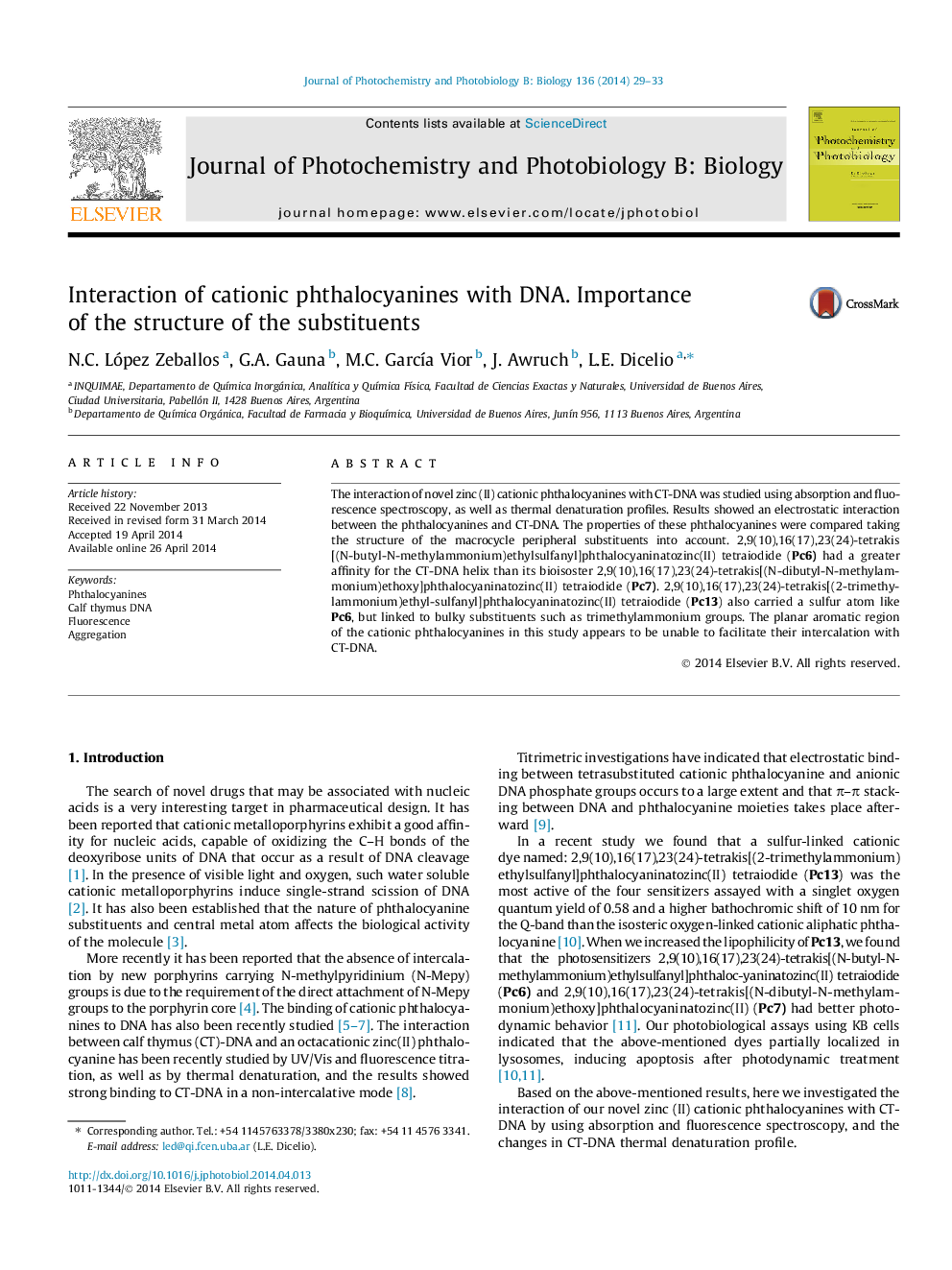| کد مقاله | کد نشریه | سال انتشار | مقاله انگلیسی | نسخه تمام متن |
|---|---|---|---|---|
| 29758 | 44436 | 2014 | 5 صفحه PDF | دانلود رایگان |

• Phthalocyanines bind to DNA by an non-intercalative mode.
• After the addition of DNA Pc13 remains more aggregate than Pc6 and Pc7.
• Pc6 has a greater affinity for the CT-DNA helix than its bioisoster Pc7.
• Planar aromatic region of cationic phthalocyanines does not facilitate intercalation.
The interaction of novel zinc (II) cationic phthalocyanines with CT-DNA was studied using absorption and fluorescence spectroscopy, as well as thermal denaturation profiles. Results showed an electrostatic interaction between the phthalocyanines and CT-DNA. The properties of these phthalocyanines were compared taking the structure of the macrocycle peripheral substituents into account. 2,9(10),16(17),23(24)-tetrakis[(N-butyl-N-methylammonium)ethylsulfanyl]phthalocyaninatozinc(II) tetraiodide (Pc6) had a greater affinity for the CT-DNA helix than its bioisoster 2,9(10),16(17),23(24)-tetrakis[(N-dibutyl-N-methylammonium)ethoxy]phthalocyaninatozinc(II) tetraiodide (Pc7). 2,9(10),16(17),23(24)-tetrakis[(2-trimethylammonium)ethyl-sulfanyl]phthalocyaninatozinc(II) tetraiodide (Pc13) also carried a sulfur atom like Pc6, but linked to bulky substituents such as trimethylammonium groups. The planar aromatic region of the cationic phthalocyanines in this study appears to be unable to facilitate their intercalation with CT-DNA.
Figure optionsDownload as PowerPoint slide
Journal: Journal of Photochemistry and Photobiology B: Biology - Volume 136, 5 July 2014, Pages 29–33